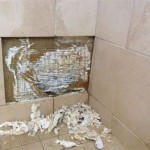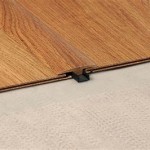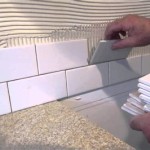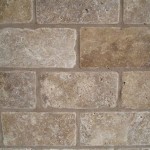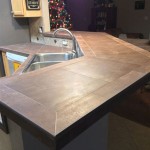How to Clean Dirty Grout Between Floor Tiles in the Shower
Dirty grout between floor tiles in the shower is a common household problem. The warm, humid environment of a shower creates an ideal breeding ground for mold, mildew, and bacteria, which can quickly discolor and stain grout. Regular cleaning and maintenance are crucial to prevent buildup and keep the shower floor looking its best. Neglecting grout can lead to more than just cosmetic issues; it can also compromise the integrity of the tiled surface, potentially leading to water damage underneath.
Several factors contribute to grout discoloration. Hard water deposits, soap scum, and body oils can accumulate on the grout surface, providing a food source for microorganisms. Over time, these deposits can harden and become difficult to remove with simple cleaning methods. Furthermore, the porous nature of grout allows it to absorb moisture and trap dirt, making it particularly susceptible to staining. The type of grout used can also influence how easily it gets dirty. Epoxy grout is generally more resistant to stains than cement-based grout, but even epoxy grout requires regular cleaning.
The tools and cleaning solutions required for cleaning grout depend on the severity of the dirt and staining. For light cleaning, a simple solution of warm water and mild detergent may suffice. For more stubborn stains, stronger cleaning agents such as bleach or hydrogen peroxide may be necessary. In addition to cleaning solutions, various tools can be used to scrub and clean grout, including grout brushes, toothbrushes, sponges, and steam cleaners. Proper ventilation is essential when using strong cleaning solutions, and protective gear such as gloves and eye protection should be worn to prevent skin and eye irritation.
Key Point 1: Preparation and Safety Measures
Before commencing the cleaning process, it is imperative to prepare the shower area and take appropriate safety measures. Thoroughly rinsing the shower floor with clean water to remove loose debris, hair, and soap scum is the first step. This pre-cleaning step allows the cleaning solution to penetrate the grout more effectively. Ensure adequate ventilation by opening windows and doors, or by using a ventilation fan. This will help dissipate any fumes from the cleaning solutions and prevent respiratory irritation.
Wearing protective gloves is essential to prevent skin irritation from cleaning solutions. Certain cleaning agents, such as bleach, can cause burns or allergic reactions upon contact with the skin. Eye protection, such as goggles or safety glasses, is also recommended to prevent accidental splashes of cleaning solution into the eyes. If using a particularly strong cleaning agent, consider wearing a mask to avoid inhaling fumes. These preventative measures significantly reduce the risk of injury or discomfort during the cleaning process.
Finally, test the cleaning solution on a small, inconspicuous area of the grout before applying it to the entire shower floor. This allows you to assess the solution's effect on the grout and tile and ensure that it does not cause any discoloration or damage. Allow the test area to dry completely before evaluating the results. If the test area shows any signs of damage or discoloration, discontinue use of the cleaning solution and try a different method.
Key Point 2: Cleaning Methods and Solutions
Several cleaning methods and solutions can be employed to effectively clean dirty grout. The choice of method depends on the severity of the dirt and staining, as well as personal preferences. A common and effective method involves using a baking soda paste. Mix baking soda with water to create a thick paste, and apply the paste to the grout lines. Allow the paste to sit for several minutes, then scrub the grout with a grout brush or toothbrush. Rinse thoroughly with clean water.
Another popular cleaning solution is a mixture of white vinegar and water. Vinegar is a natural disinfectant and can help to dissolve soap scum and hard water deposits. Mix equal parts white vinegar and water in a spray bottle, and spray the solution onto the grout lines. Allow the solution to sit for several minutes, then scrub the grout with a brush. Rinse thoroughly with clean water. It's important to note that vinegar is acidic and can damage certain types of stone tile. It's crucial to test vinegar on an inconspicuous area before applying it to the entire shower floor.
For more stubborn stains, a bleach solution may be necessary. Mix one part bleach with ten parts water in a spray bottle. Spray the solution onto the grout lines and allow it to sit for several minutes. Scrub the grout with a brush and rinse thoroughly with clean water. Bleach is a strong cleaning agent and can cause discoloration or damage to certain materials. Exercise caution when using bleach and ensure adequate ventilation. Never mix bleach with ammonia, as this can create toxic fumes.
Steam cleaners offer a chemical-free option for cleaning grout. The high-temperature steam can loosen dirt and kill mold and mildew. Use the steam cleaner's grout brush attachment to direct the steam along the grout lines. Wipe away the loosened dirt with a clean cloth. Steam cleaners can be effective for light to moderate grout cleaning, but may not be sufficient for removing heavily ingrained stains.
Key Point 3: Rinsing and Drying
After scrubbing the grout with the chosen cleaning solution, thorough rinsing is essential to remove any remaining residue. Residual cleaning solution can attract dirt and contribute to future staining. Rinse the shower floor with clean water until all traces of the cleaning solution are gone. Using a showerhead or a bucket of clean water, direct the water along the grout lines to ensure thorough rinsing.
Drying the shower floor is equally important to prevent the regrowth of mold and mildew. Moisture promotes the growth of these organisms, so keeping the grout dry will help to prevent stains and discoloration. Use a clean towel or squeegee to remove excess water from the shower floor. Pay particular attention to the grout lines, as these areas tend to retain moisture. A fan can also be used to circulate air and speed up the drying process.
Consider applying a grout sealant after cleaning and drying the grout. Grout sealant creates a protective barrier that helps to repel water and prevent stains. Choose a grout sealant that is specifically designed for use in showers and follow the manufacturer's instructions for application. Regular application of grout sealant can help to keep your grout clean and prevent the buildup of mold and mildew.
Maintaining a clean shower environment is crucial in preventing grout from becoming excessively dirty. Regularly wipe down the shower walls and floor after each use to remove soap scum and water droplets. Ensure adequate ventilation to reduce humidity levels. Addressing minor stains and discoloration promptly will prevent them from becoming more difficult to remove over time. By adopting these preventative measures, you can significantly reduce the frequency and intensity of grout cleaning.
Choosing cleaning products that are specifically designed for tile and grout can also contribute to longer-lasting results. These products often contain ingredients that help to lift dirt and prevent the growth of mold and mildew. Avoid using abrasive cleaners or scrub brushes, as these can damage the grout and scratch the tile surface. Opt for gentle cleaning solutions and soft-bristled brushes to minimize the risk of damage.
Inspecting the grout regularly for cracks or damage is also an important part of grout maintenance. Cracks in the grout can allow water to seep underneath the tiles, potentially leading to water damage. If you notice any cracks, repair them promptly with grout sealant or by replacing the damaged grout. Addressing these issues early on can prevent more serious problems from developing.

How To Clean Grout Tile Cleaning Tips Simply Spotless

How To Clean Mold In Shower Grout Tips And Tricks Certified Care

How To Clean Grout Two Ingredient Diy Cleaner Lemons Lavender Laundry

How To Clean Bathroom Tile And Grout Reviews By Wirecutter

How To Clean Tile Grout Like A Professional Cleaner

How To Clean Grout Between Floor Tiles Easy Stain Removal

How To Clean Dirty Grout On Tile Floor In Seconds

How We Got Our Stained Grout White Again Young House Love

How To Clean Tile Floors

Tile Cleaning Before After Photos Chet S
Related Posts

